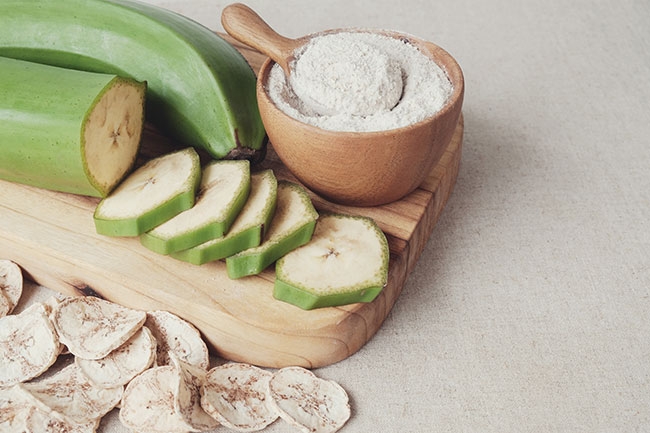
Final Proof: The future gluten-free flours
May 24, 2019
By
Jane Dummer
The next generation of wheat-free flour are no longer rice or nut-based: Get creative with sorghum or plaintains.
 Fruits like bananas and plantains are now seen as sources for gluten-free flour. Photo: Adobe Stock
Fruits like bananas and plantains are now seen as sources for gluten-free flour. Photo: Adobe StockAs consumer interest in gluten-free products has grown, the category has transitioned from a niche to a mainstream market segment. This has resulted in access to better quality ingredients including a broad range of gluten-free flours.
I’m observing the next generation of gluten-free flours to be in two categories: 1) nutrient-dense ancient grains or pseudocereals like sorghum and buckwheat, and 2) grain-free flours including fruit and vegetables like plantain and cauliflower.
Shelley Case RD, gluten-free nutrition expert and bestselling author of Gluten Free: The Definitive Resource Guide, shares her insight on the emerging gluten-free flours in the grains category, “Over the past five years there has been a surge in the use of sorghum flour. Sorghum flour has a better flavour, texture and nutritional profile compared to white rice flour that has been a staple in gluten-free baked products for many years. Gluten-free oat flour is another nutrient-dense option. It’s appearing in a wide variety of gluten-free baked goods not only for the protein, vitamin and mineral content, but for the beta-glucan fibre that plays a functional role. I really like baked products using gluten-free oat flour as they taste better and have a more silky texture compared to those made with white rice flour and various starches.”
Due to the availability of these new generation gluten-free flours, this baking segment is fast growing both in retail and food service. Kathleen Finn, National Retail Sales Manager, Cup4Cup, a California based company that develops and sells gluten-free flours and baking mixes agrees, “We are excited about ingredients that provide high nutritional content, yet perform well across all applications. For example, the bread mix we just launched includes whole oat flour, millet flour, sorghum flour, buckwheat flour, teff flour and tapioca. This nutrient-dense bread mix is already very popular. Another growth product for us is our gluten-free pizza crust mix both at retail and food service. Our customers are thrilled to find a gluten-free pizza crust that actually tastes like its gluten filled counterparts. The golden, crisp crust wins over our target market and we are excited about this product’s future.”
At the Winter Fancy Food Show in San Francisco this year, there was no shortage of fruit and vegetable flours to meet the demand of grain-free and gluten-free. Specifically, I was intrigued by plantain flour. It has been a staple of Caribbean and West Indian cooking for years due to its nutrition profile. According to The Real Coconut, written by Douglas Yu, plantain flour could fuel the grain-free movement in bakery. Plantain flour in particular is important because it is easier to digest, and has a high level of resistant starch (which is rich in prebiotics) compared to alternative flours. And on the sustainability side, plantains grow abundantly in countries such as Ecuador, Peru and Nigeria, providing an opportunity for small farmers.
Cassava was trendy in 2018 and remains so into 2019. Cassava is a nutty-flavoured, starchy root tuber. Although popular, Case cautions us about its nutrition level. “Cassava flour has begun popping up in gluten-free products including crackers, cookies and wraps as well as baking mixes combined with nut or coconut flours. Unfortunately, cassava flour does not have a stellar nutrient profile as it is mostly starch with little fibre or other favourable nutrients.”
New on the grain-free, gluten-free flour market are tiger nuts. Also tubers, they have a better nutrient profile including healthy fats and more fibre than cassava. Case describes, “Although this ancient tuberous plant has been cultivated for centuries, tiger nuts are the new kid on the block in the gluten-free world. Its high resistant starch and fibrous makeup translates well into flour. It’s also noted for its prebiotic capacity. At the 2019 Natural Products Expo West Show, Pamela’s Products (over 30 years in the gluten-free market) featured their tiger nut flour along with their gluten-free cookies made with tiger nut flour.”
The next generation of gluten-free flours are interesting and emerging. Keep your eye on these flours as potential growth ingredients, given that consumption of gluten-free baking continues to rise.
Jane Dummer, RD, known as the Pod to Plate Food Consultant, collaborates and partners with the food and nutrition industry across North America.
www.janedummer.com
Print this page

Leave a Reply